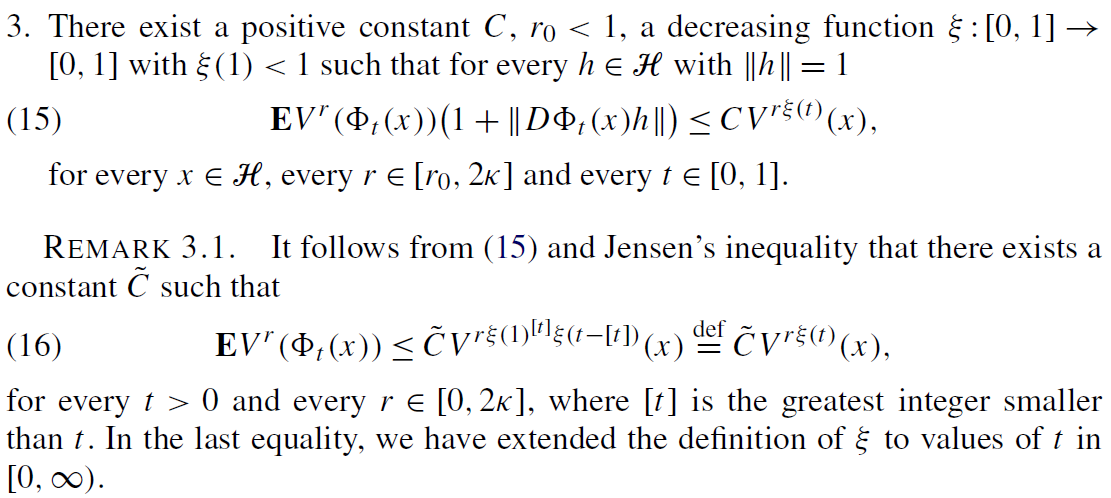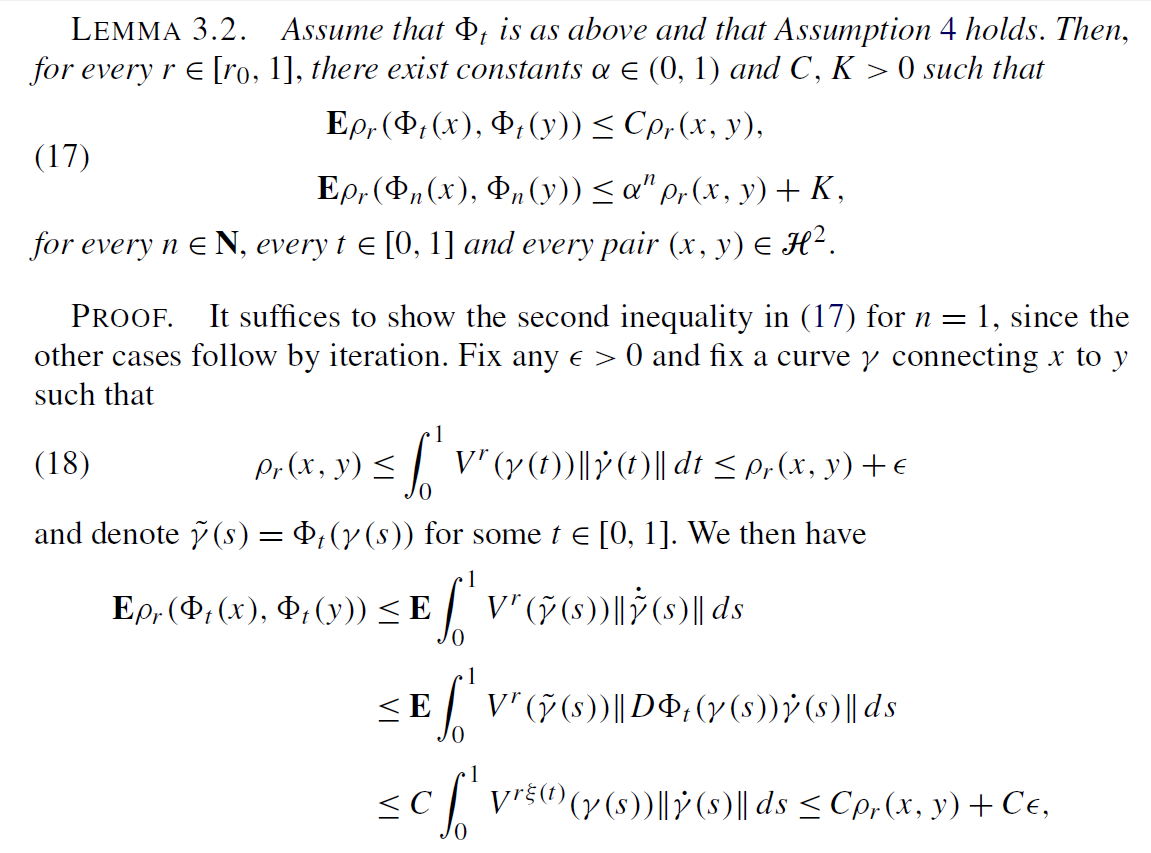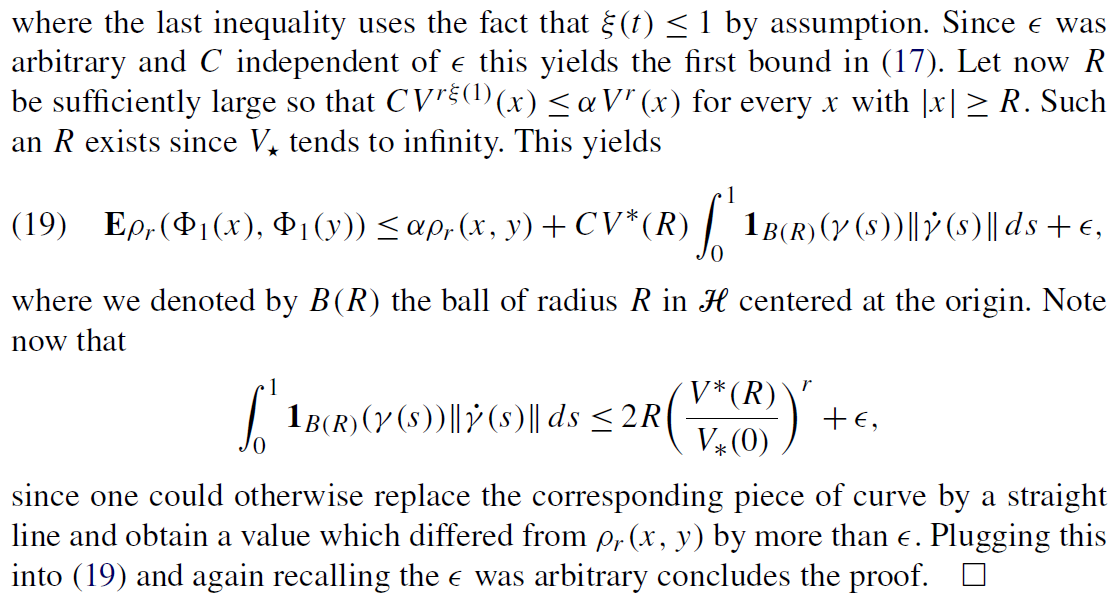I'm trying to understand the following conclusion from this paper (see below for the relevant paragraphs):
I'm not sure whether they really mean that it follows from the statements of Lemma 3.2 (since I absolutely don't see how this conclusion is possible) or from its proof (which I could imagine).
Taking a closer look to the proof of Lemma 3.2-ii, we see that the result actually is that for all $r\in[r_0,1)$ and for all $\alpha\in(0,1)$, there is a $K\ge0$ such that $$\operatorname E\left[\rho_r(X^x_1,X^y_1)\right]\le\alpha\rho_r(x,y)+K\;\;\;\text{for all }x,y\in E\tag1.$$ And, as always, this extends to bounds for $\operatorname E\left[\rho_r(X^x_n,X^y_n)\right]$ by the semigroup property.
In the proof the additive $K$ corresponds to a bound on an integral restricted to an open ball. Maybe the assumption $\rho(x,y)\ge K_\ast$ can be used to show this integral is $0$?






